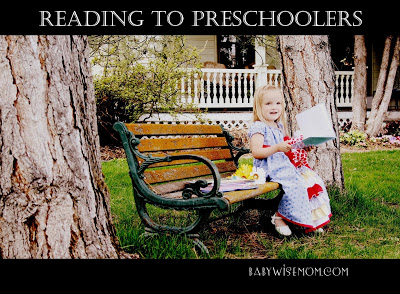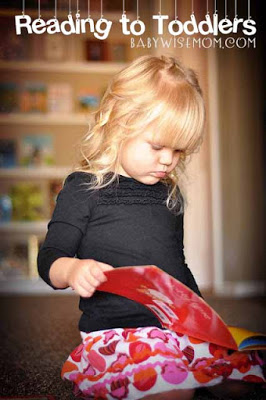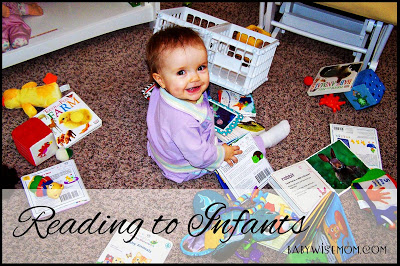
I have recently written on Reading to Toddlers and Reading to Infants. Today I want to continue on with talking about reading to preschoolers. I am defining a preschooler as a 3-4 year old. You might start to apply these ideas to an older two year old and might hang on to them as your child is an early five year old.
What to Read
When I talked about Reading to Toddlers, I pointed out that usually about 2.5, your child will start to like stories that have a simple plot. By age 3, your child might have little to no interest in books unless there is a plot. Continue to read books with a plot built into it. There are countless fantastic picture books out there. I have a post on Great Children’s Books. This lists a whole lot of fantastic books that would be good for preschoolers (and some for toddlers). Go with what your child enjoys reading while sometimes mixing it up with a different book to expand horizons. This post may contain affiliate links which won’t change your price but will share some commission.
With preschoolers, you can get more complex in your plots. In The Read-Aloud Handbook, Jim Trelease talks about the value of fairy tales (start on page 57). Fairy tales teach children that there are scary things and scary people in the world, but they also teach children that you can overcome those scary things. Ella Enchanted is a fun fairy tale book with a strong female lead.
Expand Attention Span
With the preschooler age range, you will start to expand the attention span of your child. You will go books that have one or two sentences per page to books that have paragraphs on each page, and you can even move on to books that will take you several days to read as your child builds up to it. Older preschoolers may be ready for short novels (100 pages or less). Trelease says, “Just keep in mind that endurance in readers, like runners, is not built overnight; start slowly and build gradually” (page 60).
I also want to encourage you if your preschooler has zero interest in chapter books or anything beyond a picture book. Kaitlyn, now age 8, really didn’t like chapter books until first grade. It didn’t have anything to do with her intelligence or ability to sit still and pay attention. Kaitlyn has a phenomenal aptitude in reading and language arts. I don’t say that lightly. She was speaking full, complex, varied sentences by 14 months old. She was reading on her own by 3 years old (self taught). She has always had fantastic stamina in sitting still (definitely the best of all of my children). She would sit for an hour listening to picture book after picture book. She just didn’t want to read chapter books. Today she reads chapter books with enthusiasm.
I share all of that with you because I don’t want to you to worry about your child’s intelligence level nor future fate as a reader is doomed if your preschooler doesn’t want to read chapter books. Kaitlyn is not the only child I know of high intelligence who was this way as a preschooler and young school student. All children I know like this are highly creative and very good at art, so I have an anecdotal theory that it may be that these children enjoy looking at the art in picture books.
And as a side note, picture books are okay for every reading level. No person is too old for picture books.
Reading Methods
- Your preschooler will really become or be familiar with the favorites as you read them again and again. If it is a story your child knows well, sometimes pause and let your child fill in the blanks. You can do the same with predictable books.
- Continue on with having a consistent time of day and place you read to your child each and every day. You can allow your child to do the page turning if she is interested in doing so.
- Say the title of the book, the author, and the illustrator before you read each book.
- You can engage your child in the book more by asking what your child thinks the book will be about or what your child thinks will happen next.
- Use expression while reading. Keep your tone interesting as you read. Slow down when something is suspenseful. Speed up when it is exciting.
- But in your reading, make sure you do not read too quickly for your child to follow along and know what you are saying.
- A fun thing to do is to bring the book to life. If your child is having a favorite book, think up some activities to do along with it. If you can’t think of any, Google it. “Activities for The Pout Pout Fish.” Ideas will pop up. The internet is full of creative people.
- Make sure dad takes a turn in reading to the child as well, especially to boys. You want your children to know that dad values books, too.
- Answer the questions your child comes to you with. Preschoolers are inquisitive and want to know everything. Foster that love of learning by answering questions with patience.
 The Enchanted Collection Bo...Shop on Amazon
The Enchanted Collection Bo...Shop on Amazon The Read-Aloud Handbook: Se...Shop on Amazon
The Read-Aloud Handbook: Se...Shop on Amazon
You might also like:
 |
| Reading to Toddlers |
 |
| Reading to Infants |

First, thank you for the assurance that she will eventually like chapter books 🙂 My daughter LOVES books (all she does is 'read' during IP, she has them memorized) and has quite the vocabulary for her age, and will sit for an hour or more listening to me read picture books but loses interest after a few days when I pull out a chapter book.How might you improve reading comprehension? She's obviously listening since she can memorize many books and regurgitate back, but when you ask what happened, she answers randomly. Maybe she thinks it's silly to ask such an obvious question and it deserves a silly answer, but I'm not sure. I really want this capability when it comes to Bible stories so we can learn something together. Any suggestions? (She's 3.5)
Focus on activities that teach sequencing. You might also do puzzles. Talk about what comes first and what happens last. Say a part of the story and then ask what comes next. Understanding sequencing is helpful. Puzzles are helpful because they help show how a piece is part of a whole. If she can't repeat what is first, middle, and last, start by you explaining it. If you read the 3 Little Pigs, you would say, "Which house did the wolf visit first?" "Which one did he visit next?" "Which one did he visit last?" If she can't answer, then answer it for her.